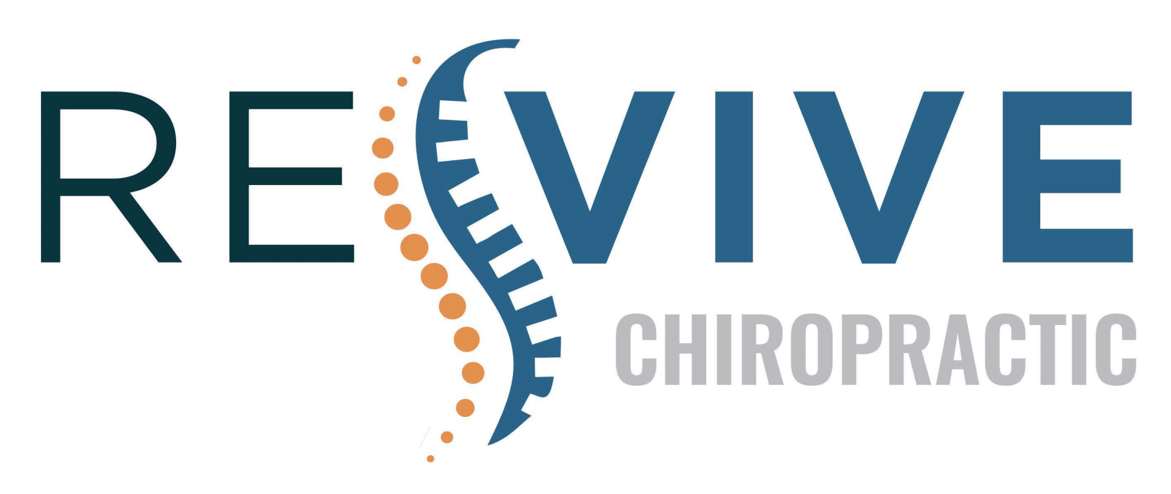You know that feeling when you've pushed your limits in training, and recovery seems just as important as the workout itself. It's not just about taking a break; it's about understanding the nuanced strategies that can improve your recovery process. From optimizing your nutrition to incorporating active recovery methods, every choice you make can greatly impact how quickly you bounce back. But what if there are additional, often overlooked techniques that could elevate your recovery game even further? Let's explore these elements to guarantee you're not just recovering, but thriving.
Importance of Recovery
Recovery is the unsung hero of athletic performance. You might focus heavily on training, pushing your limits day in and day out, but it's during recovery that your body repairs, rebuilds, and strengthens. Without proper recovery, you're setting yourself up for fatigue, injuries, and decreased performance. Recognizing this significance is essential for anyone serious about their athletic journey.
When you train, you create tiny tears in your muscles. Recovery gives your muscles the chance to heal and adapt, leading to increased strength and endurance. You need to listen to your body; it'll signal when it's time to rest. If you ignore those signals, you risk overtraining, which can derail your progress and lead to burnout.
Moreover, recovery isn't just about physical rest. Mental recovery is equally important. You need to recharge your mental energy to maintain motivation and focus. Incorporating active recovery methods like light stretching or yoga can help clear your mind and keep you engaged in your training.
Sleep plays a significant role in recovery, too. Aim for quality sleep, as it's during these hours that your body releases growth hormones essential for muscle repair.
You'll find that prioritizing recovery not only enhances your performance but also boosts your overall well-being.
In short, don't underestimate the significance of recovery. Embrace it as a key component of your training regimen, and you'll likely see improvements that reflect your hard work.
Hydration Strategies
Hydration is essential for your recovery, and understanding electrolytes can make a significant difference.
Timing your hydration throughout the day helps maintain ideal performance, while using hydration tracking tools can keep you accountable.
Let's explore these strategies to enhance your recovery process.
Importance of Electrolytes
When you push your limits during workouts, it's important to replenish your body with the right balance of electrolytes. These minerals play a significant role in maintaining ideal hydration, supporting muscle function, and preventing cramping.
If you want to enhance your recovery and performance, pay attention to your electrolyte levels.
Here are some key electrolytes to include in your hydration strategy:
- Sodium: Helps retain fluid and maintain blood pressure.
- Potassium: Essential for muscle contractions and nerve function.
- Calcium: Supports muscle contractions and bone health.
- Magnesium: Aids in muscle recovery and energy production.
- Chloride: Works with sodium to help maintain fluid balance.
Incorporating these electrolytes into your post-workout routine can make a significant difference.
Whether through electrolyte-rich foods or specialized drinks, make sure you're getting enough of these important minerals. Doing so will help you bounce back faster and prepare for your next workout.
Timing Your Hydration
Ideal hydration isn't just about what you drink, but when you drink it. To optimize your recovery, timing plays an essential role. Start by hydrating before your workout. Drinking water or electrolyte-rich beverages about 30 minutes prior can enhance your performance and prepare your body for exertion.
During your workout, sip on fluids at regular intervals. Aim for about half a cup every 15 to 20 minutes, especially if you're sweating heavily. This keeps your body in balance and helps prevent dehydration, which can slow down your recovery.
Post-exercise, your hydration strategy becomes even more important. Aim to drink at least 16 to 24 ounces of fluid for every pound lost during your workout. Include electrolytes to replenish what you've sweated out. Don't wait until you feel thirsty; instead, create a routine where you hydrate consistently throughout the day.
Lastly, be mindful of your hydration on rest days. Continue your fluid intake to support muscle recovery and maintain overall health.
Hydration Tracking Tools
Tracking your fluid intake is a game changer for optimizing recovery and performance. When you know exactly how much you're drinking, you can better understand your hydration needs and make adjustments as necessary.
Luckily, there are several hydration tracking tools that can help you stay on top of your game.
- Mobile Apps: Use apps like MyFitnessPal or WaterMinder to log your daily intake effortlessly.
- Smart Water Bottles: Invest in a smart bottle that syncs with your smartphone to track your hydration automatically.
- Wearable Devices: Some fitness trackers monitor your hydration levels, providing real-time feedback during your workouts.
- Hydration Reminders: Set reminders on your phone or use dedicated hydration alert apps to guarantee you're drinking enough throughout the day.
- Hydration Journals: Keep a simple notebook to jot down your daily fluid intake, helping you identify patterns over time.
Nutrition for Optimal Recovery
When it comes to recovery, nutrition plays a vital role in helping your body bounce back.
You need to focus on essential nutrients, time your post-workout meals right, and remember that hydration is key.
Let's explore how these factors can enhance your recovery process and improve your performance.
Essential Nutrients for Recovery
To access your full recovery potential, focusing on essential nutrients is key.
These nutrients not only repair your muscles but also replenish your energy stores, helping you bounce back faster after intense workouts.
Here are five vital nutrients you should prioritize in your post-exercise nutrition:
- Protein: Critical for muscle repair and growth, aim for high-quality sources like chicken, fish, or plant-based options.
- Carbohydrates: They restore glycogen levels, fueling your next workout. Think whole grains, fruits, and starchy vegetables.
- Healthy Fats: Avocados, nuts, and olive oil provide anti-inflammatory benefits, aiding in recovery.
- Electrolytes: Sodium, potassium, and magnesium help maintain fluid balance and prevent cramping. Consider adding electrolyte-rich foods like bananas and leafy greens.
- Vitamins and Minerals: Nutrients like vitamin C and zinc boost your immune system and assist in muscle recovery. Citrus fruits and nuts are great choices.
Incorporating these essential nutrients into your diet will enhance your recovery process, allowing you to train harder and perform better.
Timing Your Post-Workout Meals
After understanding the nutrients your body craves for recovery, it's equally important to contemplate when you consume them. Timing your post-workout meals can considerably influence how well your body recovers.
Ideally, you should aim to eat within 30 to 60 minutes after finishing your workout. This window is vital because your muscles are primed to absorb nutrients, which helps replenish glycogen stores and kick-start muscle repair.
When you eat post-workout, focus on a balance of carbohydrates and protein. Carbohydrates help replenish the energy you've burned, while protein aids in muscle repair and growth. A good rule of thumb is to consume a 3:1 ratio of carbs to protein. For example, a smoothie made with banana, Greek yogurt, and a scoop of protein powder is a fantastic option.
Don't forget to listen to your body. If you're not hungry immediately after your workout, try to eat something light and nutrient-dense, like a protein bar or a piece of fruit, and follow up with a more substantial meal later.
Hydration's Role in Recovery
Hydration plays an essential role in your recovery process. When you exercise, you lose fluids through sweat, and if you don't replenish them, your body can struggle to bounce back. Proper hydration helps transport nutrients, regulate body temperature, and maintain overall performance.
Here are key benefits of staying hydrated during your recovery:
- Reduces muscle soreness: Proper hydration helps flush out toxins and reduces inflammation.
- Enhances nutrient absorption: Water aids in the delivery of essential nutrients to your muscles.
- Supports joint lubrication: Staying hydrated keeps your joints well-lubricated, preventing stiffness.
- Boosts energy levels: Dehydration can lead to fatigue; maintaining hydration helps keep your energy up.
- Improves mental focus: Staying hydrated enhances cognitive function, helping you stay sharp for your next workout.
To optimize your recovery, aim to drink water before, during, and after your workouts. You might also consider electrolyte-rich drinks, especially after intense sessions.
Sleep and Rest Techniques
When it comes to athletic recovery, sleep and rest techniques play an essential role in your performance and overall well-being. Quality sleep helps your body repair muscle tissues, regulate hormones, and replenish energy stores. Prioritizing sleep isn't just a luxury; it's a necessity for peak recovery.
To get the most out of your sleep, aim for 7-9 hours of quality rest each night. Create a sleep-friendly environment by keeping your bedroom dark, quiet, and cool. Consider using blackout curtains or a sleep mask to block out light, and earplugs or a white noise machine to minimize noise distractions.
Establishing a consistent sleep schedule also helps. Going to bed and waking up at the same time every day reinforces your body's natural circadian rhythm. This consistency can improve sleep quality and make it easier for you to fall asleep and wake up refreshed.
In addition to long sleep durations, incorporating short naps can be beneficial. A 20-30 minute nap can recharge your energy and enhance your mood, especially after intense training sessions. Just be careful not to nap too late in the day, as it might interfere with your nighttime sleep.
Lastly, don't underestimate the power of relaxation techniques. Practices like deep breathing, meditation, or gentle stretching before bed can help calm your mind and prepare your body for restorative sleep.
Active Recovery Methods
Active recovery methods are essential for keeping your body in top shape after intense workouts.
By incorporating low-intensity exercises and focusing on stretching and mobility work, you can enhance your recovery and prevent injuries.
Let's explore how these techniques can benefit your training routine.
Low-Intensity Exercises
Incorporating low-intensity exercises into your recovery routine can greatly enhance your overall performance and well-being.
These exercises allow your body to recover while still keeping you active, promoting blood flow and reducing soreness. By engaging in low-intensity activities, you can guarantee a smoother shift back into your regular training regimen.
Consider adding these low-intensity exercises to your routine:
- Walking: A simple yet effective way to boost circulation.
- Cycling: Gentle cycling can help maintain leg strength without strain.
- Swimming: The buoyancy of water reduces impact, providing a great full-body workout.
- Yoga: Enhances flexibility, balance, and relaxation while keeping you mobile.
- Light resistance training: Focus on low weights to promote muscle recovery without overexertion.
#
Stretching and Mobility Work
Stretching and mobility work are essential components of any recovery routine, helping you maintain flexibility and prevent injuries. By incorporating these practices, you'll enhance your athletic performance and speed up recovery.
Start with dynamic stretches before your workouts to warm up your muscles and improve your range of motion. This prepares your body for the demands of exercise.
After your workouts, focus on static stretching. Hold stretches for 15-30 seconds to target specific muscle groups and alleviate tightness. Pay attention to areas that feel particularly tight or sore; they often need the most care.
Mobility work, including foam rolling and joint mobility exercises, can also greatly enhance your recovery. Foam rolling helps release muscle knots and improve blood flow, while mobility exercises keep your joints functioning effectively.
Aim to dedicate 10-15 minutes post-workout to stretching and mobility exercises. Consider incorporating yoga or Pilates into your routine for an added focus on flexibility and core strength.
Listen to your body, and adjust the intensity and duration of your sessions as necessary. By making stretching and mobility work a priority, you'll set yourself up for quicker recovery and better overall performance.
## Stretching and Mobility Work
Mobility exercises and targeted stretches play a crucial role in your athletic recovery routine. When you engage in these activities, you not only enhance flexibility but also promote blood flow to your muscles, aiding in quicker recovery times.
Incorporating a variety of stretching and mobility work can help reduce muscle soreness, prevent injuries, and improve overall performance.
Here are some key benefits of including stretching and mobility exercises in your routine:
- Increased Flexibility: Regular stretching helps lengthen tight muscles, allowing for a greater range of motion.
- Improved Circulation: Targeted mobility exercises enhance blood flow, delivering essential nutrients to your muscles.
- Reduced Muscle Tension: Stretching alleviates tightness, which can lead to better relaxation and recovery.
- Enhanced Performance: Greater flexibility and mobility can improve your athletic capabilities, making movements smoother and more efficient.
- Injury Prevention: Maintaining mobility helps you avoid strains and sprains by keeping your joints and muscles in prime condition.
To get started, incorporate dynamic stretches before your workouts and static stretches afterward.
Focus on areas that tend to tighten, such as hips, hamstrings, and shoulders.
Remember, consistency is key; aim for a few minutes of mobility work each day.
Cold Therapy Benefits
Cold therapy, often referred to as cryotherapy, is a powerful tool for athletes looking to enhance recovery and reduce inflammation. By exposing your body to cold temperatures, you can constrict blood vessels and decrease metabolic activity, which helps alleviate soreness and swelling after intense workouts. This process not only speeds up recovery but also helps you get back to training sooner.
When you apply cold therapy, whether through ice packs, cold baths, or specialized cryotherapy chambers, you're actively reducing pain and muscle fatigue. It's particularly effective for treating acute injuries and overuse conditions. If you've ever experienced a sprain or strain, you know how essential it's to manage inflammation. Cold therapy can help you do just that.
Moreover, using cold therapy can improve your overall performance. By incorporating it into your recovery routine, you'll likely notice increased mobility and reduced stiffness in your muscles. This means you can push harder during workouts without the fear of prolonged downtime.
Additionally, cold therapy can enhance your mental resilience. The shock of cold can trigger endorphin release, giving you a natural boost in mood and focus. This mental edge can be beneficial, especially during competitive events.
Compression and Massage
After an intense training session, incorporating compression and massage into your recovery routine can greatly enhance your muscle repair and overall performance.
Both methods can help reduce muscle soreness, improve circulation, and speed up the healing process. Here's how you can make the most of these techniques:
- Compression Garments: Wearing compression sleeves or socks can promote blood flow, helping to flush out toxins and deliver oxygen-rich blood to your muscles more efficiently.
- Foam Rolling: This self-massage technique can relieve muscle tightness and enhance flexibility. Target areas that feel sore after workouts.
- Sports Massage: Consider booking a session with a qualified therapist who understands athletic needs. They can focus on specific muscle groups and relieve tension.
- Active Release Techniques (ART): This specialized massage focuses on releasing tight muscles and connective tissues, which can improve your range of motion and lessen discomfort.
- Timing: Use compression immediately after workouts for the best results, and integrate massage into your routine regularly to maintain peak muscle health.
Mental Recovery Techniques
While physical recovery is essential, don't overlook the importance of mental recovery techniques in your overall performance. Your mind plays a significant role in how well you perform and recover. Incorporating mental recovery into your routine can enhance focus, reduce stress, and improve your overall well-being.
Start by practicing mindfulness. Take a few minutes each day to sit quietly and focus on your breath. This not only calms your mind but also helps you develop greater awareness of your thoughts and feelings. When you're more in tune with your mental state, you can better manage stress and anxiety related to competition or training.
Visualization is another powerful tool. Spend time imagining yourself succeeding in your sport. Picture every detail: the sights, sounds, and sensations. This technique can boost your confidence and mentally prepare you for performance. When you visualize success, your brain creates pathways that help you achieve it in reality.
Don't forget the importance of rest. Allow yourself downtime to recharge mentally. Engage in activities you enjoy outside of your sport, whether that's reading, painting, or spending time with friends. This balance can alleviate pressure and provide fresh perspectives.
Finally, consider journaling. Writing down your thoughts and feelings can help you process your experiences and set goals. Reflecting on your progress helps you stay motivated and focused.
Monitoring Your Progress
To effectively improve your athletic performance, monitoring your progress is essential. Keeping track of your training and recovery can help you identify what's working and what needs adjustment.
By regularly evaluating your performance, you can make informed decisions that enhance your recovery strategy and overall athleticism.
Here are some key elements to focus on when monitoring your progress:
- Training Logs: Record your workouts, including duration, intensity, and type of exercise.
- Recovery Metrics: Track your sleep quality, hydration levels, and nutrition to understand their impact on your performance.
- Performance Tests: Use regular evaluations like time trials or strength tests to gauge your improvements over time.
- Injury Tracking: Stay aware of any aches or pains, noting their frequency and severity to prevent long-term issues.
- Mental Well-being: Keep tabs on your mental state by noting stress levels and motivation, as these can directly affect your performance.
Conclusion
Incorporating these recovery strategies can make all the difference in your athletic performance. Prioritize hydration, nutrition, and quality sleep to fuel your body. Engage in active recovery and explore techniques like cold therapy and massage to enhance your healing process. Don't forget the mental aspect—practicing mindfulness and tracking your progress will keep you motivated and aware of your improvements. By focusing on recovery, you'll bounce back stronger and ready to tackle your next challenge.



